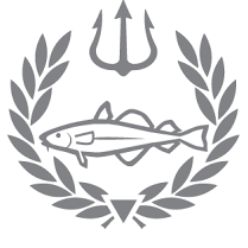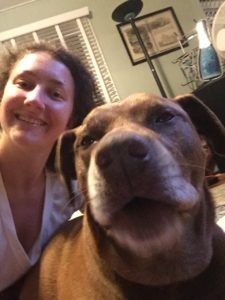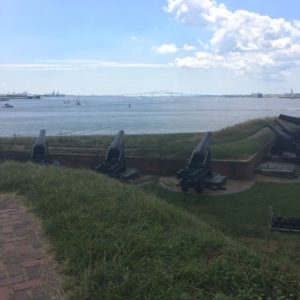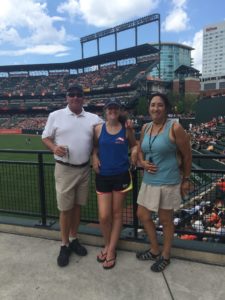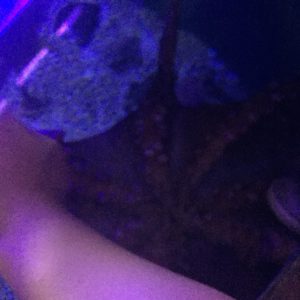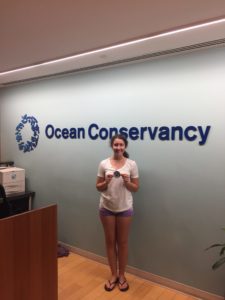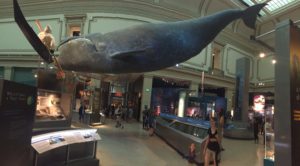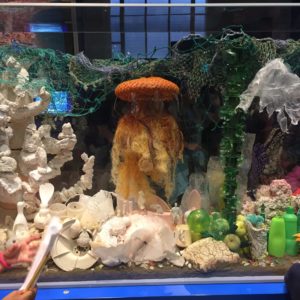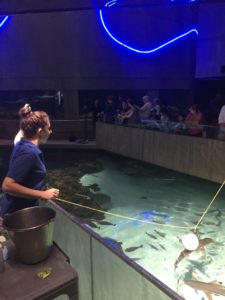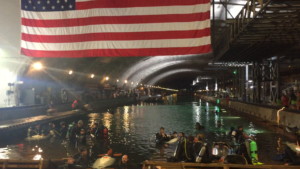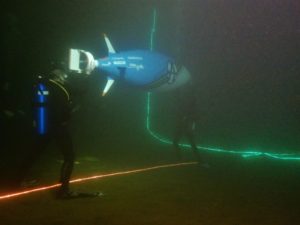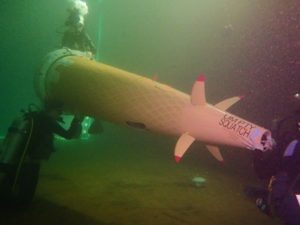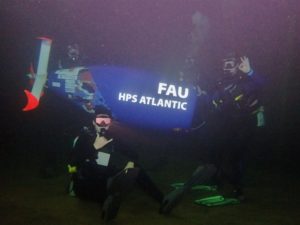
This past week I spent time with Dan Dolan, a long-standing friend of the Sea Rovers, at the New England Aquarium. The first day, we dove right in – literally. After a brief tour of the diving area, we set up our gear, and hopped into the 200,000-gallon Giant Ocean Tank! We went to the bottom and saw all the animals and their favorite spots in the tank. I got to give Myrtle, the 530-pound green sea turtle, shell scratches (which she openly welcomes) and even got to pat Marilyn the moray eel. It is VERY important to note that in their natural habitat, you should absolutely not pet animals, they can be wild and therefore unpredictable and may interpret a human approaching as a threat! Some of the other fish, such as grunts and triggerfish, were treated to a sand bath. When I picked up sand from the exhibit floor and lifted it through the water column, fish swarmed towards it. Dan later told me that they enjoy it as the particles can remove parasites from their scales (which are a rarity with the excellent care they receive!). After our dive, I helped with some cleaning in the food prep room, then I got to feed Myrtle! Myrtle enjoys fresh veggies from a local farm; though she mainly eats lettuce, she also enjoys brussel sprouts and receives a variety of squid and fish to ensure she gets protein. Once her afternoon feeding was done, Dan taught me how to use their air compressor to fill tanks!

For my next day at the aquarium, I joined Heather in the penguin department. We started the day off with food preparation. Each day, the penguins receive a different type of fish so that they get a balanced diet. The day I was in the penguin department, we served up some silversides. Soon we were in the tank scrubbing the little blues exhibit (other volunteers were cleaning the Rockhopper and African penguins) with virkon, a disinfectant used throughout the aquarium. After a quick poo and algae scrub, the penguins were ready for their morning feeding. I was in charge of recording how much each penguin ate. It was a special time in the aquarium, as the little blues were going through molting season. During their molts, penguins shed their coats, which sometimes changes their appetite. In the afternoon, we pulled food for the 2:30 feeding. This time I would be monitoring the feeding habits of the African penguins. This feeding was a bit more chaotic, as the African penguins have the largest exhibit, so there were many more animals to keep track of. However, the volunteers and interns that I worked with could identify each penguin by the coloration of the bands on their fins. After a few tries, I was able to feed some of the penguins! After that feeding, and more algae scrubbing, we wrapped up the day by cleaning up behind the scenes.

On Tuesday, I worked behind the scenes of the temperate galleries. The temperate galleries house the mangrove, salt marsh, and grouper tanks, so I worked with a wide range of species. After a morning feeding, we got to work on some cleaning. I was in charge of cleaning the protein skimmers. A protein skimmer works by using only the tank’s water and bubbles to remove dissolved organic compounds which look just like sea foam. After, we continued feeding the animals on exhibit which included groupers, herring, and ropefish! The next day was spent in the animal health department. Unfortunately, or fortunately (depending on how you look at it), it was a slow day. After feeding the two patients, an axolotl and a triggerfish we began digitizing old case files. In the afternoon things picked up a bit and we treated two blue chromis who had eye complications. These fish were particularly special because they were part of the first successful generation of blue chromis to ever be bred in an aquarium! Luckily, the treatment from the day before seemed to improve their conditions, so they were likely to return to their display within a day or so. While most of the animals that visit the animal health department and leave happy and healthy, some cases decline rapidly or pass due to health complications at old age. Such was the case of parrotfish we performed a necropsy on that afternoon. For every animal that dies in the aquarium, the animal health department performs a necropsy which includes taking scale, gill, and organ samples to determine the cause of death. This way, they can use the information to treat animals that may have come in contact with it.
On Thursday, the day I was the most excited about, I got to spend time in the marine mammals department! It began with preparing food for the harbor seals, California sea lions, and northern fur seals. Each got a variety of squid, mackerel, and of course their vitamins! After prepping, we headed to the harbor seal exhibit for a training session. Most of the seals, like the penguins were molting, so some did not participate in training. I watched as an employee asked Trumpet to perform some tasks such as showing us her belly to check for scratches and teeth so they could be brushed. She also waved to the crowd gathering outside the exhibit! Once a session is over, we prepare a toy for enrichment. That day we chose an ice block with fish inside it – which they seemed to really enjoy! Shortly after, I was shown something very special in a holding tank. Just born a week before I arrived, baby Ron was still a secret being kept from the public. I watched in awe as he listened to his mother’s vocalizations. Every mother has a specific vocalization known as a pup call that is used only for their young. It wasn’t much longer until we headed out to see the sea lion and northern fur seal training. They performed tasks such as porpoising, in which they jump out of the water like a dolphin, impersonated their neighbors the harbor seals, and even demonstrated their flexibility through target training. For this exhibit, enrichment came in the form of water guns. Some of the seals liked to chase the stream as it entered the water, others used it to clean their teeth, and of course, there were the sea lions who found that a nap was just what they needed after working. After lunch, we went back to the harbor seal exhibit, where I watched Cayenne work with a trainer. She showed off her moves as she danced in the water, and then gave me a kiss on the cheek! After a few more sessions with the northern fur seals, the day was coming to a close. After cleaning the food prep room, the enrichment toys, and pretty much every surface that we touched. We said goodnight to the animals, especially Ron!

That Saturday, I returned to working with Dan in the G.O.T. and this time my family came to watch me dive! While I enjoyed my dive, they got a great workout running up and down the ramp to follow me as I went through the tank. After my dive, it was time to feed some of the animals; my family got to meet Myrtle and feed her fresh lettuce and brussel sprouts! After Myrtle and the other fish ate, we grabbed some lunch then went back to work. The rest of the afternoon consisted of filling tanks and cleaning the dive locker and shower.
For my last day with the aquarium, I joined volunteers at the off-site facility in my hometown, Quincy, where the quarantine and rehabilitees reside. Half of the building houses the sea turtle rehabilitation tanks. Each year, sea turtles journey up the coast, but many get caught in the hook of the cape. When the weather cools, it causes their body temperatures to drop so they are “cold-stunned” and wash ashore. That’s where the team at the aquarium comes in. Rehabilitating hundreds each year, they provide excellent veterinary care to species such as the kemps ridley, loggerheads, and green sea turtles.
The summertime is a slow season, but there were still several turtles that needed care before they could be released. After feeding the turtles, there was plenty of preparation for turtle season to be done. We started by making bands to place on each turtle’s fin to easily identify them in the water. We also prepared kits for placing tags on the turtles’ back which collect data about where the turtles migrate. Lastly, and certainly not surprisingly we had plenty of cleaning to do! After clearing out a few lockers of medical supplies, we scrubbed the floors and vacuumed the tanks. Once this was done, it was time for the volunteers to log data, so I joined Dan and Dawn at a local restaurant. We talked about his adventures diving, his experience volunteering for the New England Aquarium, and his moment of fame when he filmed a short clip in the movie “Ted.” I am extremely grateful towards Dan for arranging my time at the aquarium, and I hope to return to volunteer with them soon!

